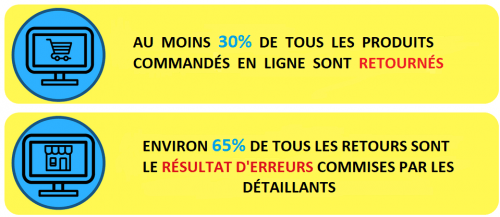Why companies choose to integrate EDI into their webshop
We like online stores and we like EDI services. By integrating the two, we’ll cherish them both even more.
In most of our blogs, we discuss the benefits of integrating and automating business processes through the use of modern, efficient management systems. With all our customers, we’ve found that the right IT solution can not only affect business growth and productivity, but also affect employee mood and stress levels.
When processes run smoothly, employees are happier and less stressed. They are able to work in a positive environment and can spend their time on important tasks that will contribute to the company’s growth, rather than spending their day entering data into the management system and feeling frustrated and demotivated.
Set up an e-commerce store
So, when we meet business owners who have recently set up an e-commerce store in their company, like the one at Shopify, we explain the possibilities and advantages of integrating this store not only with their ERP management system, if they have one, but also with EDI capabilities.
Many companies may be using all three technologies. They can have a management system that handles their accounting, sales, inventory and purchasing, and also use EDI services to send and receive purchase orders and invoices with their business partners.
EDI to automate processes
What many executives tend to forget is to integrate all these technologies together to further streamline and automate processes, reduce manual data entry and improve efficiency. Why hire more employees to enter new orders from your partners via EDI into your ERP system if you can automatically transfer all orders directly to the system? Why not take advantage of the ability to send orders from your e-commerce platform directly to your suppliers or manufacturers via EDI?
Enhancing the capabilities of a company’s e-commerce platform with EDI capabilities will undoubtedly ensure a better balance between customer demands from the online store and supply chain requirements.
The aim is to exchange real-time information with suppliers quickly and automatically, to ensure that the supply chain is managed as efficiently as possible.
EDI for faster order processing
The aim is to ensure that orders are processed and dispatched quickly to meet consumer needs. This is to offer consumers greater visibility of specific product inventory levels. The aim is to improve communication between distributors, retailers, manufacturers and customers. At the end of the day, what company doesn’t want to increase the speed of order processing and invoice payment receipt, as well as improve overall efficiency to boost sales?
E-commerce stores, EDI services, and modern, easy-to-use ERP systems are all on the rise. Many business owners are increasingly interested in the latest business technologies that have the potential to help their company grow and succeed. We invite everyone to integrate all these systems to see great improvements!
Read more of our blogs on e-commerce and EDI integration by visiting our EDI2XML blog page.

 Source:
Source: 
 In my opinion, the above statistics, reflecting e-commerce product returns, seem frightening. Is it possible to reduce the above percentages? Can your online business avoid these mistakes?
In my opinion, the above statistics, reflecting e-commerce product returns, seem frightening. Is it possible to reduce the above percentages? Can your online business avoid these mistakes?